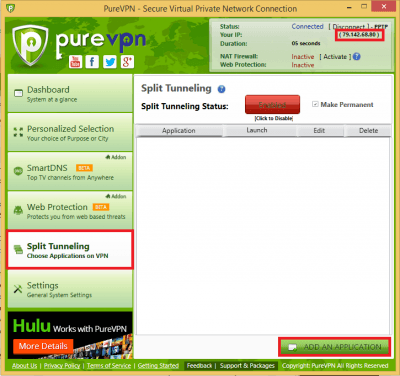
- #VPN ON UTORRENT HOW TO#
- #VPN ON UTORRENT UTORRENT#
- #VPN ON UTORRENT DOWNLOAD#
- #VPN ON UTORRENT TORRENT#
If, nothing happens and the connecting text is permanent then Good job! Once the connection goes down, all downloads/uploads should drop down to “0”, and connecting should appear in the bottom bar of the software. To test if it really do that and that it won’t just switch over to the regular network during a disconnection, we simply try to disconnect from the VPN service.
#VPN ON UTORRENT DOWNLOAD#
If this address is correct, the download will start as normal, and be going through your VPN connection. Now while connected to the VPN, start a download. Remember that IPv4 Address you should remember (or write down)?įill in the value section with your IPv4 Address, and click “Set”. Now look for “ net.bind_ip” and “ net.outgoing_ip“. On the “Filter” type in “ip”, this will narrow it down a lot! The Advanced section will spew tons of configuration out on you, but there is luckily a filter *Phew!* This is true, and can cause things to stop working! Now here is the tricky part (Not really), click on the “Advanced” section. Go to “Options” and then to “Preferences”. Now remember the IPv4 address (or write it down) as we will need this now. Should you pick the wrong one, fear not! We will test it to make sure it’s correct. In the terminal window image above you can see that the end is “ 252” which reveals to us that this adapter is only able to communicate with 2 other devices, so this must be the one I’m looking for. That zero tells us (in this case) that the adapter is able to communicate with at least 254 other devices, and if the adapter has this zero at the end in the “Subnet Mask” line, its most likely NOT that one. Usually on the other adapters, the line below “IPv4 Address” that says “Subnet Mask” will often (if not always) have one of the following values But what we want to look for is the line below that could be quite revealing. I shall admit that if you have a lot of adapters it won’t be easy to find some times. So, what we want to look for is the “IPv4 Address” of the VPN adapter.

What is actually being printed is the most used information about your internet adapters. This will drop down a lot of text, that might be overwhelming for some, but fear not. This should open up the black terminal window. Now we need to open the command prompt terminal, so to do that we simply type Once it has a connection, click the Windows Key, or open your start menu ( PS: This is a guide for the Windows OS if you haven’t figured that out by now).

So the first thing we need to do is to start up our VPN service and connect to it.
#VPN ON UTORRENT TORRENT#
To do this, we need to find out what the VPN’s “local” IP address is that we want to force bind to the torrent client. Some computers have a WiFi adapter installed either on the motherboard, or any external cards or dongles, so don’t panic if you find more! Anyhow, the trick is to find out which one is used for your VPN service. If you have installed a VPN client software, you should have two. Usually your computer has at least one adapter.

#VPN ON UTORRENT HOW TO#
Click here to learn more! So how to prevent this (in uTorrent)?Ī serious torrent client should always have a configuration section where the user can force the client to only use one specific network adapter. In this tutorial we are using VPN service from Private Internet Access.
#VPN ON UTORRENT UTORRENT#
What uTorrent does during a VPN disconnection is to reset all it’s connections, and start back up again on the regular network connection that is not encrypted. During the night for instance, your VPN tunnel could go down while you sleep, and you would be totally unaware that you’re computer now downloads on your regular network connection. Some torrents takes forever to download, and you’re not always at your computer. Starting up any VPN service, and then fire up uTorrent is easy!īut what happens if your VPN connection goes down and you get disconnected from the service?


 0 kommentar(er)
0 kommentar(er)
